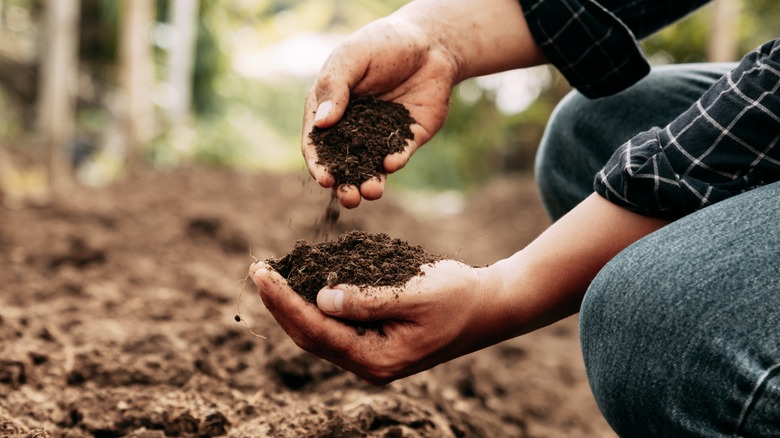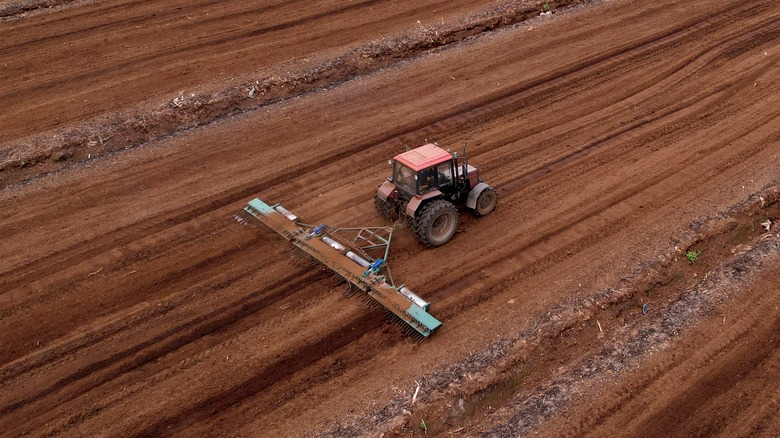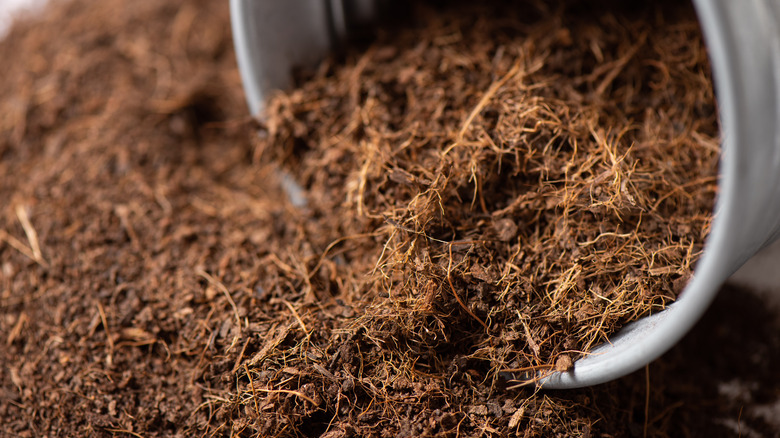Peat Moss Vs. Coco Coir: Which Is Right For Your Garden?
Peat moss and coco coir have similar properties, making both beneficial in your garden, but how do you know which one to choose? While their functions are similar, how they are harvested and their effect on the environment are very different.
As soil amendments, peat moss and coco coir help improve soil structure. In areas with dense clay, that means loosening your garden soil so that it allows water to flow through rather than becoming boggy after a season of rain. Sandy soils benefit from these products because they add structure to the garden, helping it to better retain moisture and nutrients. There are a few considerations when you are trying to decide whether peat moss or coco coir is right for your garden. Are you environmentally conscious, considering only options that are renewable resources? Or are you looking for a tried and true product that you have used in the past? Let's take a look at the pros and cons of each soil amendment so you can make the best choice for your garden.
About peat moss
Peat moss is an exceptionally popular product that is often used in premixed soils for houseplants, containers, and raised garden beds. Readily available in large bags at garden centers, such as Walmart, for less than $20 for over 2 cubic feet in a compressed bag, you get a large volume of product. Although these bags are quite large, peat is light and airy when dry, so it is easy to haul. However, once you open that compressed bag, add the amendment to your garden, and water thoroughly, you can see how it expands because of its amazing ability to retain moisture.
Although peat moss is widely recommended for gardens, you should be aware that it is not a sustainable resource. Peat is harvested from bogs which are beneficial to the environment for their ability to absorb carbon. Yes, the moss does regrow, but at only a fraction of the rate with which it is harvested.
About coco coir
Unlike peat moss, coco coir is a renewable resource. This soil amendment is a byproduct of coconut processing. So, that coconut milk you use in your favorite meal might also produce the coco coir you use in your garden. In a bag of coco coir, you generally get the husk of this fruit ground into a fine texture, which is also sometimes referred to as "peat." By using this amendment in your garden to improve soil structure, you are contributing to less waste while building a healthy garden environment.
When it first became available in garden centers, coco coir was quite pricey and mostly available in small bags. Now, with the increase in the price of peat moss and coco coir becoming more widely available in large, compressed bags, the price of both of these soil amendments is comparable. Since you will pay about the same amount for either of these products to do the same job in your garden, consider taking the environmentally-friendly route and choose coco coir the next time you need to amend your garden.


